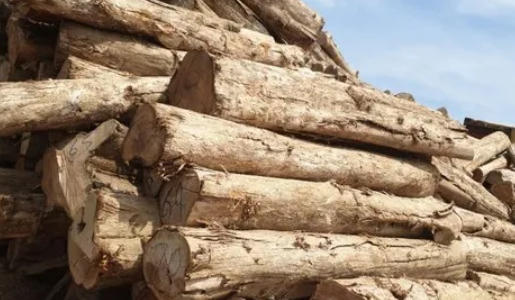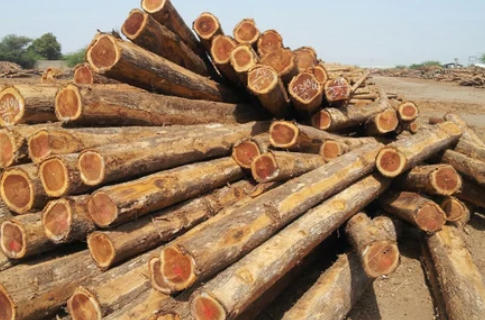Views: 222 Author: Rebecca Publish Time: 2025-10-13 Origin: Site











Content Menu
● Origins & Global Producers of Teak
>> Southeast Asia: The Traditional Source
>> Modern Plantations and Emerging Regions
● Varieties of Teak: Genuine and Plantation Grades
>> Local Importers and Specialty Stores
>> B2B Marketplaces and Directories
>> Certification & Authenticity
>> Trade Events
● Sourcing Tips: What to Look for When Buying
● Teak Sustainability & Environmental Impact
>> Greenheart
>> Iroko
● Practical Guide for Teak Outdoor Furniture Buyers
>> Weatherproofing and Maintenance
● Maintenance Guide For Teak Wood
● Sustainable Buying—What to Ask Suppliers
>> Europe
● FAQs
>> 1. Where Does Most Teak Wood Come From?
>> 2. How Can I Tell If Teak Wood Is Genuine?
>> 3. What Are Common Uses for Teak Wood?
>> 4. Is Plantation Teak as Good as Burmese Teak?
>> 5. Where Can I Buy Teak Wood Online?
Teak wood stands as an icon in the world of fine carpentry, outdoor furniture, and luxury construction. Its rich golden hue, natural oils, and robust grain patterns make it not only visually stunning but also exceptionally resistant to environmental stress. From classic yacht decking to backyard seating, knowing how to source authentic teak is crucial for professionals and enthusiasts alike. This guide consolidates the latest sourcing strategies, supplier details, environmental considerations, alternatives, and practical buying tips for anyone searching for this coveted hardwood.

Teak Wood is a tropical hardwood native to South and Southeast Asia. Its legendary durability and decay-resistance stem from high levels of natural oils and silica within its fibers. Unlike many other woods, teak requires little to no surface treatment for outdoor use, thanks to its resistance against fungi, pests, and even saltwater. Teak's aging process transforms freshly milled yellow-brown wood into a deeper golden-brown, appreciated by craftsmen and designers worldwide.[1]
Historically, the finest and most sought-after teak comes from Myanmar (Burma), Indonesia (Java, Sumatra), and India (Kerala, Karnataka). Burmese teak, sometimes called “King of Woods,” is renowned for its density, uniform grain, and superior color, especially in marine and architectural projects. Export restrictions and ecological concerns have made Burmese teak less accessible, driving demand for plantation-grown alternatives.[2]
To meet global needs and preserve natural forests, plantations now thrive in:
- Indonesia (government-run and private estates)
- Latin America (Costa Rica, Brazil)
- Africa (notably Ghana and Nigeria)[3][2]
Plantation teak, sustainably managed and often certified by bodies such as FSC or SLVK, provides a responsible alternative to wild-harvested wood.
- Sourced from old-growth forests in Myanmar
- Prized for tight grain, natural oil content, and rich coloration
- Limited availability due to conservation efforts
- Grown in managed forests globally; usually aged 20-50 years before harvest
- More accessible, often certified for sustainability
- Slight variations in density, grain, and color compared to Burmese teak
In most regions, reputable online stores and lumber specialists provide both raw teak and finished products:
| Supplier Name | Description | Region | Sustainability | Cited Grade |
|---|---|---|---|---|
| Woodworkers Source | Wide variety, detailed specs | USA/Global | Yes | FEQ/Plantation |
| Advantage Lumber | Plantation & genuine teak | USA/Global | Yes | FEQ/A/B |
| Brazilian Lumber | Exotic hardwoods, imports | USA | Yes | Plantation Only |
| Cook Woods | Domestic/Imported teak, free shipping | USA | Yes | FEQ/Plantation |
| Teak Wood Supply | Premium grades, custom sizes | USA/Global | Yes | FEQ Grade |
| Timber Tropics | Sustainable sourcing focus | USA | Yes | Verified Plantation |
| Teak Culture | Comprehensive buying guide | Online/Global | Yes | Multiple grades |
Major retailers such as Lowe's, Home Depot, and regional woodworking outlets also offer teak products, though selection may favor engineered or plantation options, not old-growth Burmese teak.[4][5]
For bespoke projects and premium grades, many buyers seek out specialty importers or local lumberyards that carry FEQ-grade teak or offer direct customer support. Local options can facilitate custom milling, finish selection, and grade verification.
Platforms like Alibaba, ThomasNet, and Global Sources connect buyers directly with distributors and manufacturers worldwide. Prioritize verified suppliers with sustainability certifications.
- Always verify the botanical name (Tectona grandis)
- Check for grades: FEQ (First European Quality) is highest, followed by A/B/C for plantation wood
- Documentation: FSC, SLVK, or other sustainability certifications
- Request photos or samples
- Search review platforms such as Trustpilot and Google Reviews
- Participate in woodworking forums like Reddit or Facebook groups for peer insight[6]
Visiting furniture expos, construction shows, and woodworking conferences can help buyers meet suppliers directly and inspect materials in person. Local events often reveal new alternative species and innovative composite options.[7]
Seek unmistakable golden-brown hues with straight, uniform grain. Lower grades may display variations or sapwood inclusion, both of which reduce durability.
Proper kiln or air-drying prevents future warping and moisture retention. European standards differ slightly from American, so clarify specifications before purchase.[8]
Compare quotes across suppliers but beware bargain prices that may indicate low-grade or misrepresented wood. Confirm shipping, bulk discounts, and return policies.
Illegal logging and aggressive harvesting threaten teak's native forests, particularly in Myanmar and other Southeast Asian countries. Such practices have degraded habitats, reduced biodiversity, and exacerbated carbon emissions.
Sustainably managed plantations mitigate environmental damage by:
- Acting as carbon sinks: mature teak trees absorb significant CO₂
- Supporting biodiversity when integrated with agroforestry systems
- Reducing pressure on wild forests and providing local farmer income
Processing teak into lumber or furniture is relatively eco-friendly, especially when manufacturers use wood waste for biomass energy. Kiln drying, a crucial step, consumes energy but can be resource-efficient if burning byproduct wood. Teak's natural resistance eliminates the need for chemical treatments, improving recyclability at the end of its lifecycle.[3]
Teak products can be reused, upcycled, or burned for low-carbon bioenergy, extending stored carbon benefits and minimizing landfill use. Furniture made from reclaimed teak offers a sustainable, low-impact alternative to new harvests.[3]

Due to price, scarcity, and sustainability, buyers often consider alternatives:
- Durability and resistance nearly match teak
- Deep brown color; suitable for marine and outdoor use
- Price reflects quality; considered the closest natural alternative[9]
- Golden-brown hue, tough and low-maintenance
- Slightly less robust than teak but excellent for joinery, decking, and marine applications
- Economical, widely available, and eco-friendly[10][9]
- Lower cost, light weight
- FSC-certified, visually similar to teak
- Best for lightweight, sustainable outdoor uses[11]
- Mahogany, cumaru, acacia, and bamboo often serve as substitutes in furniture and construction, though they may lack teak's specific blend of density, oil content, and decay resistance.[12]
- Grade A: Cut from center of mature trees; high oil content and optimal durability
- Grade B: Transition wood with moderate oil content and variable color
- Grade C: Outermost rings, less durable, lower cost[13]
- Mortise-and-tenon joints or dowel reinforcements are preferred for longevity
- Handcrafted pieces that highlight grain and minimize visible metal fasteners enhance both style and durability
- Leave unfinished for weathered silver patina, or oil lightly for lustrous gold
- Annual cleaning and light sanding restore surface appearance
- High-grade teak may last 70–100 years with minimal intervention[13]
Teak's robustness, water-resistance, and ability to withstand saltwater exposure make it legendary for yacht decks, shipbuilding, and premium architectural millwork.[14]
Teak's appeal for patios, gardens, and poolside seating centers on its resilience and minimal maintenance requirements. Its beauty is enhanced as it ages, developing a sophisticated patina.
For elegant interiors, teak provides long-lasting floors and rich wall panels that bear the character of luxury for decades.
Artisans worldwide rely on teak's workability and stability for fine sculpture, intricate carvings, and ornamental objects.
- Sweep away debris regularly to prevent surface staining
- Use mild soap and water for cleaning; avoid harsh chemicals that can strip oils
- Optionally apply teak oil or sealant for richer color; not required for durability
- For outdoor use, allow natural greying or restore with gentle sanding
- Is the wood certified by recognized environmental bodies (FSC, SLVK)?
- Are eco-friendly processing and transport practices used?
- Are reclaimed, recycled, or composite options available for lower-impact builds?
- Can a full lifecycle analysis be provided upon request?
- Online hardwood retailers, regional lumberyards, national chains like Home Depot and Lowe's
- Some local importers specialize in FEQ-grade Burmese or certified plantation teak
- B2B distributors, specialty importers, and home improvement chains
- Emphasis on certified, eco-friendly sources[15]
- Traditional timber markets
- Licensed plantation farms
- Direct government-regulated suppliers
Teak's status as the premier hardwood for luxury and outdoor applications remains undisputed, even as sustainability and supply challenges redefine how it's sourced and used. Buyers must approach the market with an emphasis on authenticity, grade, and environmental responsibility. Plantation-grown and certified teak is not only ethical—it often matches the quality of old-growth wood for most practical uses. Those buying outside Southeast Asia now benefit from global supply chains, innovative substitutes, and trusted marketplaces that make fine teak accessible anywhere. The right research, supplier selection, and care turn a teak investment into a legacy piece for generations.

Most global teak originates from Myanmar, Indonesia, and India, with newer sustainable plantations in Africa and Latin America offering eco-friendly options. Burmese teak is highly valued, while responsibly managed plantations now fill most market demand.[2][3]
Verify the species as Tectona grandis, inspect for uniform golden-brown color and grain, and demand certifications like FSC or SLVK. Authentic teak will feel heavy, oily, and consistent in tone; avoid unrelated species such as Afrormosia, Iroko, or Limba.[17]
Teak serves in outdoor furniture, yacht decking, flooring, cabinetry, carvings, and exterior construction for high-end architectural features. Its natural oils make it suitable for marine, garden, and decorative applications.[14][13]
High-quality plantation teak (FEQ, Grade A) offers durability and beauty comparable to Burmese wood. While enthusiasts may favor Burmese teak's denser grain and deeper color, most buyers find plantation alternatives suitable and more eco-friendly.[7][13]
Top online suppliers include Woodworkers Source, Advantage Lumber, Brazilian Lumber, J. Gibson McIlvain, and major retailers such as Lowe's and Home Depot. Always check for certifications and grade before purchasing.[5][18][4]
[1](https://www.goldenteak.com/b22/2024/10/18/understanding-teak-wood-origins-quality/)
[2](https://www.goldenteak.com/b22/2024/11/19/which-country-is-the-largest-producer-of-teak/)
[3](https://impactful.ninja/how-sustainable-is-teak-wood/)
[4](https://www.lowes.com/pl/lumber-composites/teak/4294934154-4294640123)
[5](https://www.homedepot.com/b/Lumber-Composites/Teak/N-5yc1vZbqpgZ1z13ghm)
[6](https://www.reddit.com/r/woodworking/comments/1iu6uqg/where_to_source_high_quality_teak_wood_for_a/)
[7](https://www.hineighbor.com/blogs/the-journal/teak-outdoor-furniture-buying-guide)
[8](https://www.mcilvain.com/news/things-to-look-for-when-buying-teak-lumber/)
[9](https://www.iwood.co.uk/articles/192/alternatives-to-teak/)
[10](https://customfurnituredubai.ae/what-are-the-best-teak-wood-alternatives-for-outdoor-furniture/)
[11](https://www.wlwest.co.uk/news/species/best-substitute-for-teak)
[12](https://www.tillyliving.com/blogs/news/teak-acacia-bamboo-are-they-sustainable-eco-friendly-woods)
[13](https://www.patioproductions.com/blog/features/the-teak-outdoor-furniture-buyers-guide/)
[14](https://www.hineighbor.com/blogs/the-journal/uncovering-the-truth-is-teak-wood-really-waterproof)
[15](https://www.thomasnet.com/suppliers/usa/teak-lumber-45300605)
[16](https://www.youtube.com/watch?v=-6BCZ5_T-kk)
[17](https://arbteak.com/blogs/news/how-to-identify-authentic-teak-furniture)
[18](https://floridateak.com/teak-lumber-teak-wood-products/)
[19](https://www.homesandgardens.com/news/is-teak-immoral)
[20](https://www.gardeners.com/how-to/teak-furniture-thats-good-for-the-environment/7024.html)
[21](https://www.patioproductions.com/blog/common-questions/teak-patio-furniture-the-real-eco-footprint/)
[22](https://www.teakculture.com/pages/teak-buying-guide)
[23](https://aquateak.com/environmental-impact/)
[24](https://woodweb.com/knowledge_base/Budget_Alternatives_to_Teak.html)
[25](https://qualiteak.com/benefits-of-teak-wood-furniture-environmental-living/)
[26](https://www.sciencedirect.com/science/article/pii/S2666789421000155)